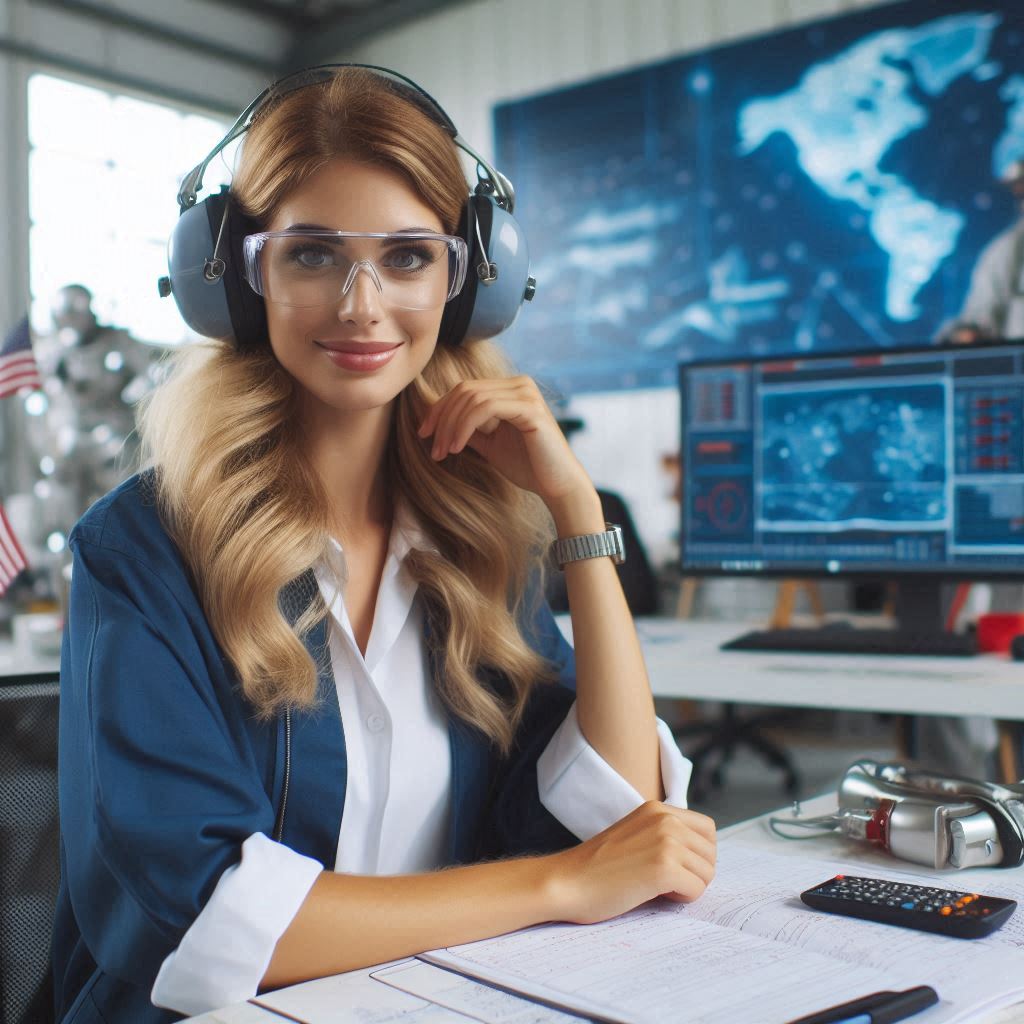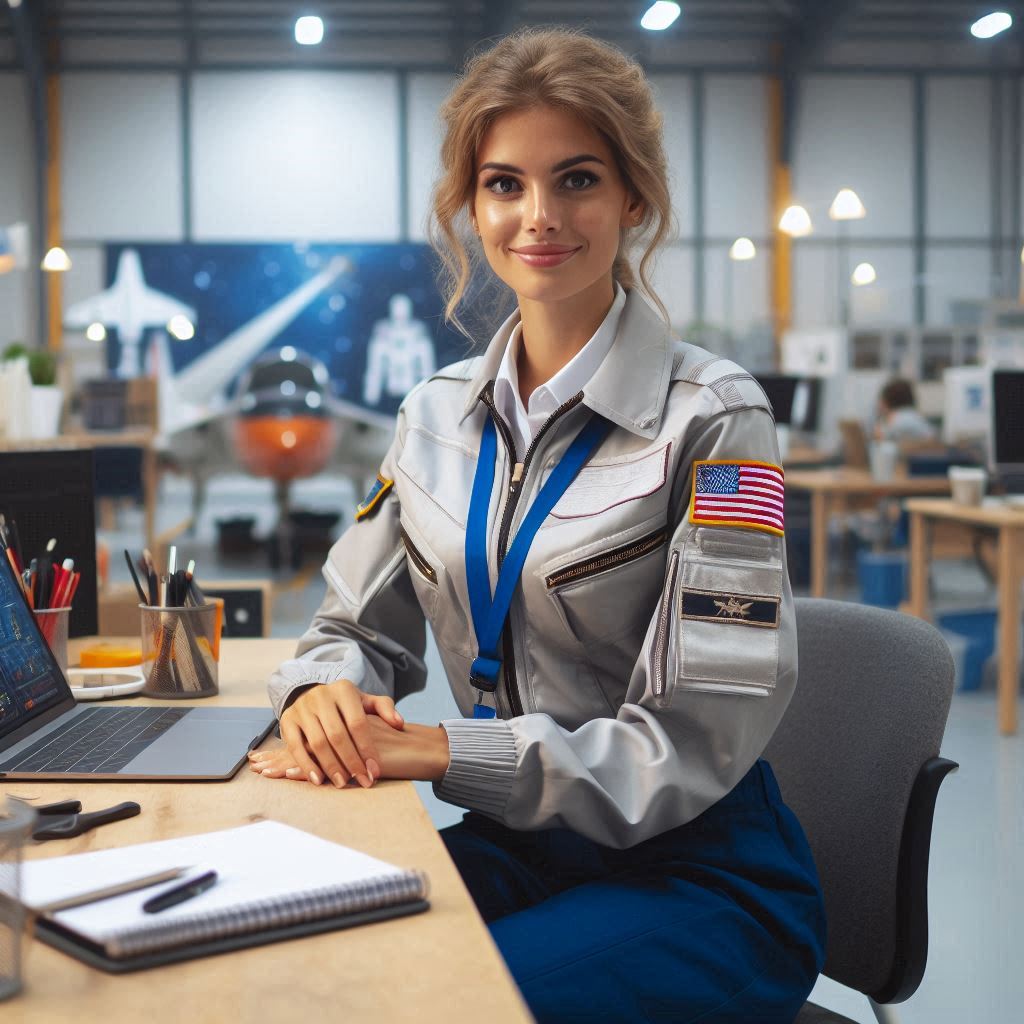Introduction
Technological innovations in aerospace engineering play a critical role in advancing the industry.
These innovations drive improvements in efficiency, safety, and sustainability, making modern aerospace operations more effective and environmentally friendly.
Advancements in technology have revolutionized the aerospace industry in numerous ways.
Improved materials and manufacturing processes have led to the development of lighter and stronger aircraft.
For instance, the use of composite materials has significantly reduced aircraft weight, leading to better fuel efficiency and lower emissions.
Advanced avionics and automation systems have enhanced flight safety and operational efficiency.
Modern aircraft are equipped with sophisticated navigation, communication, and control systems that reduce pilot workload and improve precision.
Automation in the aerospace industry, including autonomous drones and advanced robotics, has streamlined manufacturing and maintenance processes.
New propulsion technologies, such as electric and hybrid engines, are making significant strides in reducing the environmental impact of aviation.
Electric propulsion systems, which use electricity to power aircraft, are helping to cut down on traditional jet fuel consumption.
Hybrid aircraft, which combine conventional engines with electric propulsion, offer a balance between reducing emissions and maintaining high performance.
History of Technological Innovations in Aerospace Engineering
Evolution of Aerospace Technology Over the Years
The evolution of aerospace technology has been remarkable, revolutionizing how we travel and explore.
Early innovations laid the groundwork for modern advancements.
The Wright brothers’ first powered flight in 1903 marked the beginning of aviation.
This historic event demonstrated the potential of controlled, powered flight.
In the following decades, aircraft technology rapidly advanced.
The development of jet engines in the 1940s revolutionized air travel, making it faster and more efficient.
This innovation led to the growth of commercial aviation, connecting people across the globe like never before.
The space race in the 1960s pushed aerospace technology to new heights.
The launch of Sputnik 1 by the Soviet Union in 1957 marked the first artificial satellite in space.
This milestone triggered a series of innovations in space technology.
NASA’s Apollo program achieved the first manned moon landing in 1969.
This achievement demonstrated human capability to explore beyond Earth and spurred further advancements in aerospace engineering.
The technology developed during the Apollo program laid the foundation for future space exploration.
Key Milestones and Breakthroughs That Have Shaped the Industry
Several key milestones and breakthroughs have significantly shaped the aerospace industry.
One such milestone is the development of the Concorde, the first supersonic passenger jet, in the 1970s.
The Concorde could fly at twice the speed of sound, reducing transatlantic flight times dramatically.
The advent of fly-by-wire technology in the 1980s was another significant breakthrough.
This system replaced traditional manual flight controls with electronic interfaces, enhancing aircraft safety and performance.
Fly-by-wire technology is now a standard in modern aircraft.
The launch of the International Space Station (ISS) in 1998 marked a major milestone in international cooperation and space exploration.
The ISS serves as a microgravity laboratory, enabling scientific research and technological development in space.
In recent years, the development of reusable rocket technology has revolutionized space travel.
SpaceX’s Falcon 9 rocket, first successfully landed in 2015, demonstrated the feasibility of reusing rocket stages.
This breakthrough significantly reduces the cost of space missions and paves the way for more frequent space travel.
The introduction of electric and hybrid propulsion systems represents another key innovation.
These systems reduce carbon emissions and fuel consumption, addressing environmental concerns.
Companies like Boeing and Airbus are actively developing electric aircraft to promote sustainable aviation.
Unmanned aerial vehicles (UAVs), or drones, have also transformed aerospace technology.
Drones are used for various applications, including surveillance, delivery, and scientific research.
Their versatility and efficiency make them invaluable tools in modern aerospace engineering.
Current Trends and Developments in Aerospace Engineering
Advancements in Aircraft Design and Propulsion Systems
In recent years, aerospace engineers have been focusing on improving aircraft design and propulsion systems to enhance performance and fuel efficiency.
One of the key trends in this area is the development of more aerodynamic aircraft shapes that reduce drag and improve fuel efficiency.
Engineers are also exploring the use of advanced materials, such as composites, to make aircraft lighter and more durable.
Another exciting development in aircraft design is the use of additive manufacturing, also known as 3D printing, to create complex components with greater precision and speed.
This technology allows engineers to design and produce parts that are impossible to manufacture using traditional methods, leading to lighter and more efficient aircraft.
In terms of propulsion systems, engineers are working on developing hybrid-electric and all-electric propulsion systems for aircraft.
These systems offer lower emissions and reduced noise levels compared to traditional jet engines, making them more environmentally friendly.
Electric propulsion systems also have the potential to reduce operating costs for airlines in the long run.
Impact of Advancements in Materials Science and Manufacturing Techniques
Advancements in materials science and manufacturing techniques have revolutionized the aerospace industry by enabling the production of stronger, lighter, and more durable aircraft components.
Aerospace engineers are now able to design aircraft with higher performance capabilities and greater fuel efficiency thanks to these technological advancements.
One of the key trends in materials science is the development of advanced composites, which are lightweight materials made from a combination of fibers and resins.
These composites offer superior strength-to-weight ratios compared to traditional materials like aluminum, allowing for the creation of lighter and more fuel-efficient aircraft.
Manufacturing techniques such as automated fiber placement and advanced machining technologies have also played a crucial role in the development of aerospace engineering.
These techniques allow for the production of complex aircraft components with greater precision and efficiency, reducing production times and costs for manufacturers.
Overall, the latest technological innovations in aircraft design, propulsion systems, materials science, and manufacturing techniques are shaping the future of aerospace engineering.
As engineers continue to push the boundaries of what is possible, we can expect to see even more exciting developments in the field that will revolutionize the way we travel by air.
Read: Iconic US Buildings and the Architects Behind Them.
Impact of Artificial Intelligence and Automation
Role of AI and Automation in Enhancing Safety and Efficiency in Aerospace Engineering
Artificial intelligence (AI) and automation play a pivotal role in enhancing safety and efficiency in aerospace engineering.
AI algorithms analyze vast amounts of data to improve decision-making processes.
This capability helps engineers predict and prevent potential system failures, enhancing safety.
Transform Your Career Today
Unlock a personalized career strategy that drives real results. Get tailored advice and a roadmap designed just for you.
Start NowAutomation streamlines various aerospace processes, reducing the likelihood of human error.
Automated systems handle routine tasks, allowing engineers to focus on more complex challenges.
This increased efficiency leads to more reliable and consistent performance in aircraft and spacecraft.
AI-driven predictive maintenance systems monitor aircraft health in real time.
They analyze data from sensors to detect anomalies and schedule maintenance proactively.
This approach prevents unexpected failures and reduces downtime, improving overall operational efficiency.
In addition, AI enhances flight planning and management.
Algorithms optimize flight routes based on weather conditions, air traffic, and fuel consumption.
This optimization reduces fuel usage and improves flight safety by avoiding hazardous conditions.
Automation also contributes to precision in aerospace manufacturing.
Advanced robotics and automated systems perform tasks with high accuracy, resulting in better-quality components.
This precision ensures that parts meet stringent safety and performance standards.
How Autonomous Systems Are Being Integrated into Aircraft and Space Vehicles
Autonomous systems are increasingly integrated into both aircraft and space vehicles, revolutionizing aerospace operations.
In aircraft, autopilot systems have evolved from basic navigation aids to advanced autonomous systems.
Modern autopilots can handle complex flight maneuvers and adapt to changing conditions.
Autonomous drones are another significant development.
These drones perform tasks ranging from surveillance to cargo delivery.
Equipped with advanced sensors and AI, they navigate and operate with minimal human intervention, increasing operational efficiency and safety.
In space exploration, autonomous systems play a critical role in managing spacecraft and rovers.
Space missions often involve long-duration flights and remote operations where real-time communication is limited.
Autonomous systems enable spacecraft and rovers to execute pre-programmed tasks and make decisions independently.
For instance, NASA’s Mars rovers use autonomous navigation systems to traverse the Martian surface.
These systems allow rovers to avoid obstacles and select optimal paths without constant oversight from Earth.
This autonomy is crucial for conducting experiments and gathering data in challenging environments.
In spacecraft, autonomous docking systems are used for rendezvous and docking with space stations.
These systems use sensors and algorithms to ensure precise alignment and docking, reducing the risk of collision and ensuring mission success.
Moreover, advanced autonomous systems in spacecraft can manage systems health and adjust operations based on real-time data.
This capability enhances mission reliability and reduces the need for constant human control.
In essence, AI and automation significantly enhance safety and efficiency in aerospace engineering.
Autonomous systems are transforming aircraft and space vehicles, enabling more precise operations and reducing the need for human intervention.
These innovations contribute to safer, more efficient aerospace operations and pave the way for future advancements in the field.
Read: Diversity in the US Architectural Scene: A Deep Dive
Space Exploration Technologies
Recent advancements in space exploration
Exploring the recent advancements in space exploration, including the development of reusable rockets by companies like SpaceX.
These rockets have the capability to land back on Earth after launch, significantly reducing the cost of space travel.
This innovation has revolutionized the aerospace industry by making space exploration more affordable and accessible.
Another significant development in space exploration is the concept of Mars colonization.
Companies like SpaceX are actively working towards establishing a human settlement on Mars, with plans to send humans to the Red Planet in the near future.
This ambitious goal has the potential to expand human presence beyond Earth, opening up new possibilities for exploration and discovery.
Potential Implications on the Future of Aerospace Engineering
- With the advancement of reusable rockets, the cost of launching payloads into space has decreased significantly. This cost reduction has the potential to drive innovation in satellite technology, space tourism, and scientific research.
- SpaceX’s efforts towards Mars colonization have the potential to revolutionize our understanding of planetary exploration. By establishing a human settlement on Mars, we can learn more about the viability of interplanetary travel and the challenges of living in a different environment.
- The development of new propulsion technologies, materials, and systems for long-duration space missions will be crucial for the success of future space exploration endeavors. Aerospace engineers will need to focus on creating sustainable and efficient solutions for deep-space travel.
- Advancements in robotics and artificial intelligence will play a crucial role in supporting human missions to Mars and beyond. These technologies can assist astronauts in performing complex tasks, conducting scientific research, and exploring uncharted territories in space.
Ultimately, the recent advancements in space exploration technologies have the potential to shape the future of aerospace engineering in profound ways.
From reusable rockets to Mars colonization efforts, these innovations are paving the way for a new era of space exploration and discovery.
Read: Impact of Local Building Codes on US Architecture.

Environmental Sustainability in Aerospace Engineering
Focus on Environmentally-Friendly Aircraft Design
The aerospace industry is intensively working on environmentally-friendly aircraft designs.
Engineers are exploring lightweight materials to reduce fuel consumption and increase efficiency.
Advanced aerodynamics are being implemented to improve airflow and decrease drag, which also contributes to fuel savings.
Designers are integrating noise reduction technologies to lessen the impact on communities near airports.
Innovative designs are aimed at reducing the overall environmental footprint of aircraft, making them quieter and more efficient.
Development of Electric and Hybrid Aircraft
Electric and hybrid aircraft represent a significant advancement in reducing carbon emissions.
These technologies promise substantial improvements in fuel efficiency and emissions reduction.
Electric propulsion systems use electricity, often generated from renewable sources, to power aircraft, significantly cutting down on traditional jet fuel consumption.
Showcase Your Business Today
Reach thousands of readers actively exploring professional services. Publish your business profile and grow your audience now.
Publish NowHybrid aircraft combine conventional engines with electric propulsion systems.
This combination offers a balance between reducing emissions and maintaining high performance.
By switching to electric power during specific flight phases, such as taxiing or takeoff, hybrid aircraft can lower overall fuel usage.
The development of electric and hybrid aircraft involves overcoming several technical challenges.
Battery technology is one area where significant progress is needed to store enough energy for practical flight durations.
Engineers are working on improving energy density and reducing weight to make electric aircraft viable for longer flights.
Advantages of Electric and Hybrid Aircraft
Electric and hybrid aircraft offer several environmental benefits.
They significantly lower greenhouse gas emissions compared to traditional aircraft.
By using electricity from renewable sources, these aircraft can achieve near-zero emissions during operation.
Additionally, electric propulsion systems can reduce noise pollution.
Electric engines are quieter than conventional jet engines, which helps in creating a more peaceful environment around airports.
Despite their advantages, electric and hybrid aircraft face challenges.
Battery technology needs further development to extend flight range and reduce weight.
Infrastructure for charging and maintaining electric aircraft must also be established.
However, the future outlook for these technologies is promising.
Ongoing research and development are focused on making electric and hybrid aircraft more practical and affordable.
Governments and organizations are investing in these technologies to support the transition to greener aviation.
Technological innovations in aerospace engineering are driving a shift towards environmentally-friendly aircraft design and propulsion systems.
The development of electric and hybrid aircraft represents a significant step in reducing carbon emissions and minimizing environmental impact.
As technology advances and challenges are addressed, these innovations will play a crucial role in shaping the future of sustainable aviation.
Read: How to Become a Civil Rights Advocate
Uncover the Details: Telecommunications Technician: Safety Tips and Practices
Explore Further: How to Prepare for a Network Engineer Interview
Challenges and Ethical Considerations in Technological Innovations
Ethical Dilemmas Surrounding the Use of Technology
Technological innovations in aerospace engineering bring substantial benefits but also raise ethical dilemmas.
These dilemmas often revolve around the implications of new technologies on safety, privacy, and job displacement.
One major ethical concern is the use of autonomous systems, such as drones and pilotless aircraft.
While these technologies promise increased efficiency and reduced operational costs, they also pose risks related to privacy and data security.
For example, drones used for surveillance can infringe on individual privacy rights if not regulated properly.
Another ethical issue is the reliance on artificial intelligence (AI) for decision-making in aerospace systems.
AI can enhance operational efficiency and safety, but it also raises concerns about accountability.
When AI systems fail or make erroneous decisions, determining responsibility and accountability becomes challenging.
The development of advanced materials and manufacturing processes also brings ethical questions.
While these innovations improve aircraft performance and safety, they can lead to environmental concerns.
For example, the production and disposal of composite materials may have adverse environmental impacts if not managed responsibly.
Potential Risks and Implications of New Technologies
New technologies in aerospace engineering introduce potential risks and implications that must be carefully managed.
Autonomous systems, while promising, can lead to safety concerns if they malfunction or are hacked.
Ensuring robust cybersecurity measures is crucial to protect these systems from potential threats.
AI systems, although powerful, can lead to unintended consequences if not properly tested and validated.
Issues such as biased algorithms or system failures could jeopardize safety and operational effectiveness.
Continuous monitoring and improvement of AI systems are necessary to mitigate these risks.
The use of advanced materials, such as lightweight composites, brings both benefits and challenges.
These materials enhance fuel efficiency and performance but can be difficult to recycle.
The aerospace industry must develop sustainable practices to address the lifecycle of these materials and minimize environmental impact.
Another risk involves the potential for technological disparity.
As advanced technologies become more widespread, there is a risk that less advanced or outdated systems may become vulnerable to obsolescence.
Ensuring equitable access to technology and maintaining compatibility between new and existing systems are crucial for overall safety and effectiveness.
Uncover the Details: Networking Tips for Biomedical Equipment Technicians
Collaboration and Partnerships in Technological Innovations
Importance of Collaboration in Driving Innovation
Collaboration between industry, academia, and government agencies is crucial for driving innovation in aerospace engineering.
Each sector brings unique strengths and resources to the table.
Industry provides practical expertise and operational experience, academia offers cutting-edge research and theoretical insights, and government agencies contribute funding and policy support.
When these sectors work together, they create a synergistic environment that accelerates technological advancements.
Industry partners often face real-world challenges that require innovative solutions.
Academic institutions conduct foundational research that can lead to breakthrough technologies.
Government agencies set strategic priorities and fund projects that address national and global needs.
By aligning these efforts, stakeholders can address complex problems more effectively and bring new technologies to market faster.
Breakthroughs Enabled by Industry, Academia, and Government Partnerships
Partnerships between industry, academia, and government agencies have led to significant breakthroughs in aerospace engineering.
One prominent example is the development of advanced materials, such as composite materials used in aircraft construction.
These materials offer improved strength-to-weight ratios and fuel efficiency.
Academic research into material science provided the foundational knowledge, while industry applied this research to develop practical applications.
Government funding supported these efforts and facilitated the technology‘s widespread adoption.
Another example is the advancement of propulsion technologies.
Collaborative projects have led to the development of more efficient and environmentally friendly engines.
For instance, the hybrid-electric propulsion systems being tested today result from joint efforts between aerospace companies, research institutions, and government agencies.
These partnerships have driven the development of technologies that reduce emissions and improve fuel efficiency.
In space exploration, collaboration has been crucial for successful missions.
NASA‘s partnerships with private aerospace companies, such as SpaceX and Boeing, have led to innovations in spacecraft design and launch systems.
These collaborations have enabled more cost-effective space missions and advanced our understanding of space.
The integration of academic research into these projects has provided valuable insights and technological advancements.
The development of autonomous systems and artificial intelligence (AI) in aerospace engineering is another area where collaboration has yielded results.
Government-funded research initiatives often focus on AI applications for flight control and navigation.
Industry partners then implement these technologies in commercial and military aircraft.
Academic research provides the theoretical underpinnings and algorithms that drive these innovations, creating a robust ecosystem for developing cutting-edge technologies.
Gain More Insights: How to Stay Updated with Systems Engineering Trends
Learn More: Salary Expectations for Biomedical Engineers
Conclusion
Technological innovations in aerospace engineering present both opportunities and challenges.
Ethical dilemmas include privacy concerns with autonomous systems and accountability issues with AI.
Potential risks involve cybersecurity threats, system failures, and environmental impacts of advanced materials.
Despite these challenges, innovations like drones, AI, and lightweight composites significantly enhance efficiency, performance, and safety in aerospace engineering.
Ethical dilemmas require careful consideration.
Autonomous systems, such as drones, raise privacy concerns as they can be used for surveillance.
Ensuring these technologies are regulated to protect privacy is crucial.
AI systems bring another layer of complexity.
While AI improves operational efficiency and decision-making, it also raises questions about accountability.
When AI systems fail or make errors, determining responsibility can be challenging.
Potential risks associated with new technologies include cybersecurity threats.
Autonomous systems and AI are vulnerable to hacking, which can compromise safety and security.
Robust cybersecurity measures are essential to protect these systems.
System failures are another concern.
AI systems, for example, can malfunction if not properly tested and validated, leading to unintended consequences.
Continuous monitoring and improvement of AI systems are necessary to mitigate these risks.
[E-Books for Sale]
The Big Book of 500 High-Paying Jobs in America: Unlock Your Earning Potential
$19.99 • 500 High-Paying Jobs • 330 pages
Explore 500 high-paying jobs in America and learn how to boost your career, earn more, and achieve success!
See All 500 High-Paying Jobs of this E-Book
1001 Professions Without a Degree: High-Paying American Jobs You Can Start Now
$19.99 • 1001 Professions Without a Degree • 174 pages
Discover 1001 high-paying jobs without a degree! Unlock career tips, skills, and success strategies for just $19.99!




